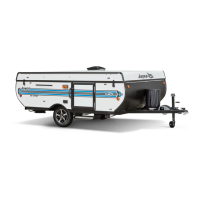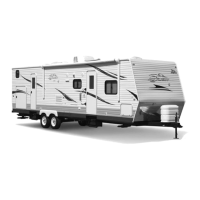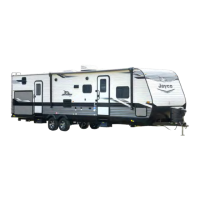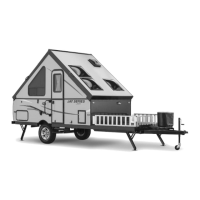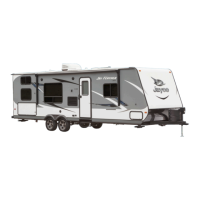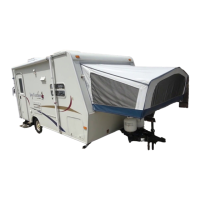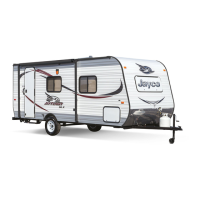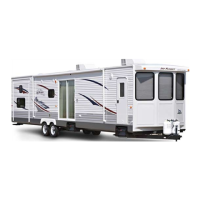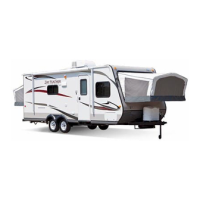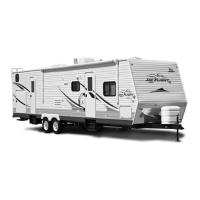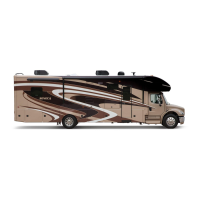–
If applicable, turn off 12-volt DC/120-volt
AC/propane to the refrigerator; defrost and
clean. Use crumpled newspaper or open
boxes of baking soda in the refrigerator to
eliminate odors during storage.
During Storage Period
–
Remove snow loads from the top of your RV
to prevent damage to the unit’s structure.
MAINTENANCE CHECKLIST
This list is a quick reference sheet for
suggested areas of regular maintenance.
Review all OEM operator’s manuals supplied
with your RV to perform these listed
maintenance items.
Prior to First Trip
–
Inspect and reseal as needed.
–
Check propane lines for leaks.
–
Check wheel lug nuts at specified intervals
to listed torque specifications, re-torque as
needed (refer to the axle OEM operator’s
manual).
–
Open all windows and the entry door, start
the furnace (if so equipped). Leave the
windows and door open and the furnace ON
until the odor from the initial use of the
furnace is fully dissipated.
–
Sanitize fresh water system.
–
If applicable, test propane and carbon
monoxide detectors.
First Two-Hundred Miles
–
Check wheel nuts at specified intervals to
listed torque values. Re-torque as needed.
Refer to the axle OEM operator’s manual.
–
Have brakes adjusted by a qualified service
technician.
Each Trip
–
Inspect and reseal.
–
Check auxiliary battery (customer supplied)
water level (if so equipped)
–
Check propane lines for leaks.
–
Check running lights.
–
Check tire pressure and wear. Make sure
the tires are cold when checking the tire
pressure.
–
If so equipped, flush out water heater tank.
–
Inspect safety chains for signs of wear.
–
Test brakes.
–
If applicable, test propane, and carbon
monoxide detectors.
After Every Tire Change
–
Tighten wheel nuts to specified torque
values at 10, 25 and 50 miles (16, 40, and 80
kilometers) to assure that they are correctly
“seated” after the tire change. Refer to the
axle OEM operator’s manual.
Daily
–
Ensure propane detector operation light is
green in color.
–
Recharge auxiliary battery (customer
supplied) after each use.
Weekly
–
Inspect and reseal.
–
Check propane lines for leaks.
–
Check tire pressure and wear. Make sure
tires are cold when checking the tire
pressure.
–
Test propane and carbon monoxide
detectors.
Monthly
–
Inspect and reseal.
–
Check fire extinguisher pressure. Refer to
the fire extinguisher label for specific
instructions.
–
Clean and lubricate the coupler (if
applicable)
–
Test the GFCI
86
SECTION 9
STORAGE & MAINTENANCE
Excessive snow, 8" or more, or ice, 2" or
more, places excessive weight on the RV
roof. Remove excessive snow or ice as
needed. Care MUST be exercised to not
damage the roof material when removing
snow & ice. Excessive weight can damage
the roof, seals, etc. Water leaks and poor fit
or operation are the results of this damage.

